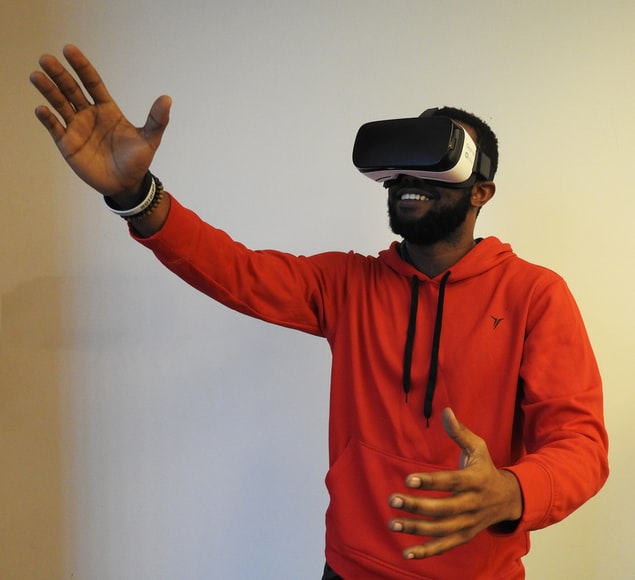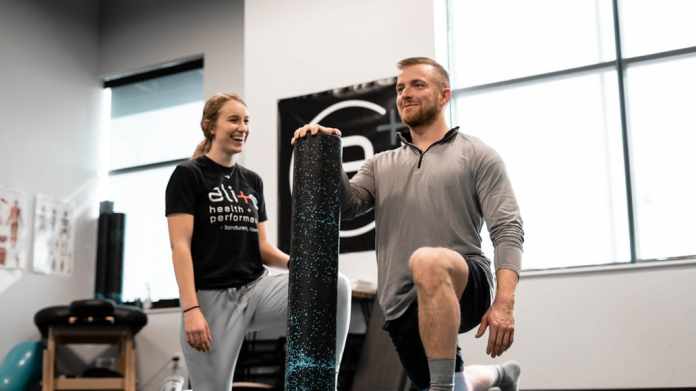Physical therapy is an industry that is constantly growing as a result of the surge in medical technology information and increased experimentation. In fact, in the United States alone, this industry is worth over $35 billion and globally it’s expected to rise at 6.15 percent up to the year 2027. In this blog, you will know 4 Latest Trends In Physical Therapy Treatments.
With its growth, a significant shift has happened to this industry that has spiked a dynamic change in how physical therapists employ their skills to meet the rising demand. Certain arising medical technologies have appeared to help pick up the slack and have helped shape the accessibility of physical therapy treatments for patients.
The following article will dive into the 4 latest trends in physical therapy treatments that will help transform its future.
Table of Contents
Virtual Reality

When we hear the term virtual reality, our minds immediately think of the gaming industry but recently, physical therapy practitioners have been using it as a new therapeutic method when treating patients. Patients are now allowed to undergo cost-effective and risk-free physical therapy through a virtual reality physical therapy clinic from the comfort of their own homes while still being under professional guidance.
It’s a virtual clinic that provides engaging treatments for patients with various health concerns and challenges who work remotely with licensed therapists by using a virtual reality (VR) headset to optimize the treatment in real-time. Virtual reality uses a fun and novel approach that allows patients to be engaged in their rehab program and stay motivated.
It’s used for patients with various diagnoses who can benefit from its use. People with neurological conditions, who have impairments in arms and lower extremities and difficulty balancing and walking may find VR to be effective. In addition, people with diagnoses such as Parkinson’s disease, multiple sclerosis, stroke, spinal cord injuries whose functional mobility is limited can benefit significantly from this method and exhibit great improvements.
Using Mobile Apps

The use of mobile phones has skyrocketed over the past few decades and in 2020 statistics showed that there were 4.28 billion mobile internet users worldwide, indicating that over 90 percent of the global internet population uses a mobile device. This has had a significant global impact on all healthcare industry sectors, and physical therapy has jumped on the bandwagon.
Patients can now access information “on-demand” when they need to and apply it immediately to practice. Physical therapy practitioners have slowly but surely taken up the use of mobile apps as high utility products in modern physical therapy. Mobile apps drive better patient engagement as they incorporate a customized list of exercises that psychical therapists can share with patients and make their therapy process enjoyable.
Apps are a low-cost way to deliver easier and unique health interventions, they boost interaction between health care providers and consumers during and after the rehabilitation process, keep practices running like clockwork, and they positively influence a patient’s condition and shorten their recovery time. All of this makes mobile apps an increasingly valuable asset for physical therapy.
Telehealth

Over the past two years, the Covid-19 pandemic has tremendously affected the way we work, interact and live. Therefore, it’s no surprise that even the approach of access to physical therapy has changed as most patients have turned to sessional using digital information and communication technologies, which are called telehealth sessions.
Telehealth has become increasingly popular and essential in these times of a health crisis, allowing people to get the care they need while lessening the risk of exposure to the virus.
For many people, nothing beats the traditional hands-on approach to physical therapy but telehealth has become a serious component of any provider’s clinical tool belt as last year alone, over 9 million patients received physical therapy through various telehealth treatments.
Smart Equipment
Intelligent equipment has become an integral part of modern physical therapy with technological aspects such as the Internet of Things and thus changed the modality of how this type of therapy is conducted.
Anti-gravity treadmills, robotic treadmills, different core body training machines, and other modern equipment have risen in popularity and use, are now considered effective and invaluable assets to physical therapy practitioners.
This smart equipment is very viable for practitioners, helping patients regain their gait as they practice movements which ultimately helps speed up recovery.
Final Words
Change is inevitable and with all the technological advancements, there’s been a myriad of new physical therapy trends that have come up in recent years, aimed at improving the patient experience and their outcome.
Whether it’s virtual reality therapy at home or using new innovative mobile apps, all of these trends have one thing in common – guide patients through targeted exercise for optimal healing and recovery.



















